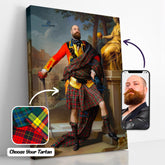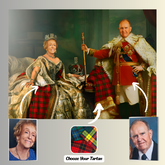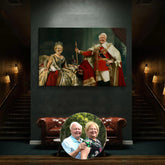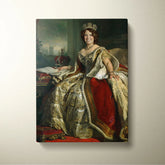-
Clan Calder Tartan Christmas Tree Skirt NS38 - Calder Tartan
Clan Calder Tartan Christmas Tree Skirt NS38 Product detail: 100% polyester tricot fabric, thick and durable. Suitable for not only Christmas but also the whole winter. Velcro closure and center hole allows for easy installment and removal. One-side Printing Machine washable on cold cycle...- From $48.25
- From $48.25
- Unit price
- per
- Calder Tartan
-
Clan Calder (Calder-Campbell) Tartan Christmas Tree Skirt YE79 - Calder (Calder-Campbell) Tartan
Clan Calder (Calder-Campbell) Tartan Christmas Tree Skirt YE79 Product detail: 100% polyester tricot fabric, thick and durable. Suitable for not only Christmas but also the whole winter. Velcro closure and center hole allows for easy installment and removal. One-side Printing Machine washable on cold...- From $48.25
- From $48.25
- Unit price
- per
- Calder (Calder-Campbell) Tartan
-
Clan Calder Tartan Halloween Pumpkin Slippers, Fluffy Spooky Slippers XV34 - Calder Tartan
Clan Calder Tartan Halloween Pumpkin Slippers, Fluffy Spooky Slippers XV34 Product Informations: Material: 100% polyester outer-layer and lining, rubber soles. These personalized slippers are a home staple that now becomes even more stylish with your custom touch. Each slipper is made 100% with soft,...- $38.45
- $38.45
- Unit price
- per
- Calder Tartan
-
Clan Calder Tartan Crest Christmas Santa Hat TT21 - Calder Tartan
Clan Calder Tartan Crest Christmas Santa Hat TT21 Product Detail: Material: Polyester Design Area: Single side full width printing Sizes:'S (26 x 38 cm); L (32.5 x 45 cm)- From $25.41
- From $25.41
- Unit price
- per
- Calder Tartan
-
Clan Calder (Calder-Campbell) Tartan Crest Christmas Santa Hat QO12 - Calder (Calder-Campbell) Tartan
Clan Calder (Calder-Campbell) Tartan Crest Christmas Santa Hat QO12 Product Detail: Material: Polyester Design Area: Single side full width printing Sizes:'S (26 x 38 cm); L (32.5 x 45 cm)- From $25.41
- From $25.41
- Unit price
- per
- Calder (Calder-Campbell) Tartan
-
Clan Calder Tartan Crest Christmas Stocking GM30 - Calder Tartan
Clan Calder Tartan Crest Christmas Stocking GM30 DESCRIPTION: Christmas Stocking is used to display as home decoration or meaningful gifts for friends and relatives on special occasions such as Christmas, Valentine, birthday' Dimensions: (Cuff Width x Length x Width): 20 x 40 x 28...- $24.45
- $24.45
- Unit price
- per
- Calder Tartan
-
Clan Calder (Calder-Campbell) Tartan Crest Christmas Stocking PU80 - Calder (Calder-Campbell) Tartan
Clan Calder (Calder-Campbell) Tartan Crest Christmas Stocking PU80 DESCRIPTION: Christmas Stocking is used to display as home decoration or meaningful gifts for friends and relatives on special occasions such as Christmas, Valentine, birthday' Dimensions: (Cuff Width x Length x Width): 20 x 40 x...- $24.45
- $24.45
- Unit price
- per
- Calder (Calder-Campbell) Tartan
-
Clan Calder Tartan Christmas Ceramic Ornament Highland Cows Style GI90 - Calder Tartan
Clan Calder Tartan Christmas Ceramic Ornament Highland Cows Style GI90 Product Detail:One of the best things about Christmas is that it gives you an excuse to dress up your home with all of the lovely ornaments we associate with the holiday season. With so...- From $14.45
- From $14.45
- Unit price
- per
- Calder Tartan
-
Clan Calder (Calder-Campbell) Tartan Christmas Ceramic Ornament Highland Cows Style PL42 - Calder (Calder-Campbell) Tartan
Clan Calder (Calder-Campbell) Tartan Christmas Ceramic Ornament Highland Cows Style PL42 Product Detail:One of the best things about Christmas is that it gives you an excuse to dress up your home with all of the lovely ornaments we associate with the holiday season. With...- From $14.45
- From $14.45
- Unit price
- per
- Calder (Calder-Campbell) Tartan
-
Clan Calder Tartan Crest Table Runner Cotton RP80 - Calder Tartan
Clan Calder Tartan Crest Table Runner Cotton RP80 Product detail: Made of durable cotton linen cloth material. Lightweight, durable and could be folded away compactly. Multi-function, stylish decor to any room or table. Gentle hand wash separately in cold water; no shrinkle; no color...- $41.15
- $41.15
- Unit price
- per
- Calder Tartan
-
Clan Calder Modern Tartan Christmas Ugly Sweater KT83 - Calder Modern Tartan
Calder Modern Tartan Clan Christmas Ugly Sweater KT83 Product Detail: Each sweater is constructed from a premium woven polyester that is ultra-soft and incredibly comfortable. Features a specialty high definition heat-dye application that ensures long lasting color vibrancy even after machine washing. Fabric is...- $48.45
- $48.45
- Unit price
- per
- Calder Modern Tartan
-
Clan Calder Tartan Scottish Lion Hawaiian Shirt AR20 - Calder Tartan
Calder Tartan Clan Scottish Lion Hawaiian Shirt AR20 These Hawaiian shirts and shorts are suitable for hot summer days or beach trips with your friends, family, and loved ones. This is an excellent gift, vacation outfit, or simply revamp your summer wardrobe.- Material: 95%...- $43.25
- $43.25
- Unit price
- per
- Calder Tartan
-
Clan Calder Modern Tartan Saddle Handbags EQ83 - Calder Modern Tartan Clan
Calder Modern Tartan Clan Saddle Handbags EQ83 Product Detail: Manufactured with premium water-proof canvas material. Features a comfortable and sturdy adjustable cross-body carrying strap made with leather and high-quality stitching for long-lasting durability. Finished with multiple interior compartments to keep your items organized.- $55.15
- $55.15
- Unit price
- per
- Calder Modern Tartan Clan
-
Clan Calder Modern Tartan Crest Oven Mitt And Pot Holder (2 Oven Mitts + 1 Pot Holder) RF58 - Calder Modern Tartan Clan
Calder Modern Tartan Clan Crest Oven Mitt And Pot Holder (2 Oven Mitts + 1 Pot Holder) RF58 Product detail: A must-have item for your modern home cooking. The oven mitt & pot holder providesmaximum protection for your hands as well as brighten your...- $38.75
- $38.75
- Unit price
- per
- Calder Modern Tartan Clan
-
Clan Calder Modern Tartan Crest Jogger Sweatpants TP70 - Calder Modern Tartan
Calder Modern Tartan Clan Crest Jogger Sweatpants TP70 Product details: This unisex jogger features a soft and durable fabric. These garments are made from polyester, with each design being made-to-order 95% polyester, 5% spandex Double layer side insert pockets High definition printing colours Design...- $48.25
- $48.25
- Unit price
- per
- Calder Modern Tartan
-
Clan Calder Modern Tartan Bow Tie OI90 - Calder Modern Tartan Clan
Calder Modern Tartan Clan Bow Tie OI90 Product detail: Unique item with your custom design can be worn on various occasions, such as weddings,'anniversaries, and birthday parties. 100% polyester satin, silky and durable. Adjustable neckband fits neck sizes 11.5' to 20' Flat measurement without...- $34.45
- $34.45
- Unit price
- per
- Calder Modern Tartan Clan
-
Clan Calder Modern Tartan Sun Shade 2 Pieces NP61 - Calder Modern Tartan Clan
Calder Modern Tartan Clan Sun Shade 2 Pieces NP61 Car Sun Shade 28'x28'x2pcs Merging anti-UV coating and aluminized film cushion, this car sun shade can protect seatsand dashboards from cracking due to sun damage while also keeping them cool to the touch.' Material: 100...- $56.25
- $56.25
- Unit price
- per
- Calder Modern Tartan Clan
-
Clan Calder Tartan Unisex Baseball Jersey DT54JF51 - Calder Tartan
Calder Tartan Clan Unisex Baseball Jersey DT54JF51 Product Detail: Each of our baseball jerseys is custom-made-to-order and handcrafted to the highest quality standards. It is not only extremely soft to the touch but breathable as well. Our jersey is printed on sustainable fabrics so...- $42.25
- $42.25
- Unit price
- per
- Calder Tartan
-
Clan Calder (Calder Campbell) Tartan Unisex Baseball Jersey TJ35CK15 - Calder (Calder Campbell) Tartan
Calder (Calder Campbell) Tartan Clan Unisex Baseball Jersey TJ35CK15 Product Detail: Each of our baseball jerseys is custom-made-to-order and handcrafted to the highest quality standards. It is not only extremely soft to the touch but breathable as well. Our jersey is printed on sustainable...- $42.25
- $42.25
- Unit price
- per
- Calder (Calder Campbell) Tartan
-
Clan Calder Tartan Crest Tumbler TO35 - Calder Tartan Clan
Calder Tartan Clan Crest Tumbler TO35 Product Detail: Calder Tartan Crest Tumbler Introducing our Tartan Tumbler, a perfect companion for your daily hydration needs. This mobile tumbler comes with a slide lid and an ideal size, providing convenience as you enjoy your refreshing beverages....- From $45.99
- From $45.99
- Unit price
- per
- Calder Tartan Clan
Ex: Your Tartan + Product
Popular Products
Turn Me Royal Personalized Portrait from Your Photo, Custom Tartan. Custom Canvas Wall Art as Gift for Men
- From $32.45
- From $32.45
- Unit price
- / per
Royalty Couple Personalized Portrait from Your Photo, Custom Tartan. Custom Canvas Wall Art
- From $47.45
- From $47.45
- Unit price
- / per
The Queen Personalized Portrait from Your Photo, Custom Tartan. Custom Canvas Wall Art as Gift for Women
- From $32.45
- From $32.45
- Unit price
- / per
List Of Tartan
-
Clan A
- Abercrombie Tartan
- Aberdeen Tartan
- Abernethy Tartan
- Adair Tartan
- Adam Tartan
- Ayrshire Tartan
- Agnew Tartan
- Aikenhead Tartan
- Ainslie Tartan
- Aiton Tartan
- Allan Tartan
- Alexander Tartan
- Allardice Tartan
- Allison Tartan
- Anderson Tartan
- Angus Tartan
- Anstruther Tartan
- Arbuthnot Tartan
- Armstrong Tartan
- Arnott Tartan
- Auchinleck Tartan
- Ayrshire Tartan
-
Clan B
- Baillie Tartan
- Bain Tartan
- Baird Tartan
- Balfour Tartan
- Bannatyne Tartan
- Bannerman Tartan
- Barclay Tartan
- Baxter Tartan
- Beaton Tartan
- Bell Tartan
- Belshes Tartan
- Bethune Tartan
- Beveridge Tartan
- Binning Tartan
- Bisset Tartan
- Blackadder Tartan
- Blackstock Tartan
- Black Watch Tartan
- Blair Tartan
- Blane Tartan
- Blyth Tartan
- Borthwick Tartan
- Boswell Tartan
- Bowie Tartan
- Boyd Tartan
- Boyle Tartan
- Brisbane Tartan
- Brodie Tartan
- Brown/ Broun Tartan
- Bruce Tartan
- Buccleuch Tartan
- Buchan Tartan
- Buchanan Tartan
- Burnett Tartan
- Burns Tartan
- Butter Tartan
- Byres Tartan
-
Clan C
- Cairns Tartan
- Calder Tartan
- Callander Tartan
- Cameron Tartan
- Campbell Tartan
- Campbell of Breadalbane Tartan
- Campbell of Cawdor Tartan
- Carmichael Tartan
- Carnegie Tartan
- Carruthers Tartan
- Cathcart Tartan
- Chalmers Tartan
- Charteris Tartan
- Chattan Tartan
- Cheyne Tartan
- Chisholm Tartan
- Christie Tartan
- Clark Tartan
- Clelland Tartan
- Clephan Tartan
- Clergy Tartan
- Cochrane Tartan
- Cockburn Tartan
- Colquhoun Tartan
- Colville Tartan
- Cooper Tartan
- Couper Tartan
- Craig Tartan
- Cranstoun Tartan
- Crawford Tartan
- Crichton Tartan
- Crief District Tartan
- Crosbie Tartan
- Cumming Tartan
- Cunningham Tartan
- Currie Tartan
- Clan D
- Clan E
- Clan F
- Clan G
- Clan H
- Clan I
- Clan J
- Clan K
- Clan L
-
Clan M
- Maitland Tartan
- Malcolm Tartan
- Mar Tartan
- Marjoribanks Tartan
- Maxtone Tartan
- Matheson Tartan
- Maule Tartan
- Maxwell Tartan
- Meldrum Tartan
- Melville Tartan
- Menzies Tartan
- Mercer Tartan
- Middleton Tartan
- Moffat Tartan
- Moncrieffe Tartan
- Montgomery Tartan
- Monypenny Tartan
- Moncreiffe Tartan
- Monteith Tartan
- Morrison Tartan
- Mouat Tartan
- Moubray Tartan
- Mow Tartan
- Muir_More Tartan
- Muirhead Tartan
- Munro Tartan
- Murray Tartan
- Murray of Atholl Tartan
-
Clan Mc/Mac
- MacAlister Tartan
- MacArthur Tartan
- MacAlpine Tartan
- MacAulay Tartan
- MacBain Tartan
- MacBean Tartan
- MacBeth Tartan
- MacCallum Tartan
- MacCraig Tartan
- MacColl Tartan
- MacCorquodale Tartan
- MacDiarmid Tartan
- MacDonald Tartan
- MacDonald of Clanranald Tartan
- MacDonald of Sleat Tartan
- MacDonnell of Glengarry Tartan
- MacDonnell of Keppoch Tartan
- MacDougall Tartan
- MacDowall Tartan
- MacDuff Tartan
- MacEwen_MacEwan Tartan
- MacEdward Tartan
- MacFarlane Tartan
- MacGill Tartan
- MacGillivray Tartan
- MacGregor Tartan
- MacGowan (McGowan) Tartan
- MacHardy Tartan
- MacIan Tartan
- MacInnes Tartan
- MacIntyre Tartan
- MacKay Tartan
- MacKillop Tartan
- MacKellar Tartan
- Mackinlay Tartan
- MacKenzie Tartan
- Mackie Tartan
- MacKinnon Tartan
- MacKintosh / MacIntosh Tartan
- MacLeod Tartan
- MacMillan Tartan
- MacNab Tartan
- MacNaughton Tartan
- MacNeil / MacNeill Tartan
- MacNeil of Colonsay Tartan
- MacNicol Tartan
- MacPhail Tartan
- MacPhee_MacFie Tartan
- MacPherson Tartan
- MacQuarrie Tartan
- MacQueen Tartan
- MacRae Tartan
- MacRow Tartan
- MacSporran Tartan
- MacTaggart Tartan
- MacTavish Tartan
- MacThomas Tartan
- McCorquodale Tartan
- McCulloch Tartan
- McFadzen Tartan
- McGeachie Tartan
- McIver Tartan
- McKerrell Tartan
- Clan N
- Clan O
- Clan P
- Clan R
-
Clan S
- Sandilands Tartan
- Scott Tartan
- Scrymgeour Tartan
- Selkirk Tartan
- Sempill Tartan
- Seton Tartan
- Shaw Tartan
- Shepherd Tartan
- Sinclair Tartan
- Skene Tartan
- Skirving Tartan
- Smith Tartan
- Somerville Tartan
- Spalding Tartan
- Spens Tartan
- Spottiswood Tartan
- Stevenson Tartan
- Stewart Tartan
- Stewart of Appin Tartan
- Stirling Tartan
- Strachan Tartan
- Straiton Tartan
- Strange Tartan
- Strathclyde District Tartan
- Stuart of Bute Tartan
- Sutherland Tartan
- Swinton Tartan
- Clan T
- Clan U W Y
- Request Your Clan
Clan Calder (Calder Tartan)
1. About Clan Calder (Calder Tartan)
2. Clan Calder History (Calder Tartan)
According to historian William Anderson, the French knight Hugh de Cadella, who was appointed Thane of Calder and afterwards known as Cawdor, is how the name first gained notoriety in Scotland.
Inverness, where the Calders were prominent nobles with considerable domains beginning in the fourteenth century, is where the name originated.
Between 1178 and 1198, Hugh de Kaledouer was present when William the Lion granted a charter at Montrose and gave Willelmus de Haia a toft in Forfar.
He attested a charter by Swan filius Thori during the same reign and gave the Abbey of Scone forty acres in Buthyrgasc.
William Meignes sold Donald of Calder, lord of that ilk, the other half of Dunmaglas in 1419.
In 1461, Farchardus de Caldor served as prebendarius de Crechmont, and in 1589, John Calder served as Bute Persuivant.
The Calders of Asswanly were granted a baronetcy in Nova Scotia in 1686.
3. Clan Calder Tartans
Clan Calder may don the Campbell tartan because they are related to the Cawdor Campbell family.
Campbell of Cawdor Modern
Campbell of Cawdor Ancient
4. Clan Calder Crest & Coats of Arms
4.1 Clan Calder Crest
Worn by all of the name and ancestry
Crest Description:
A hart’s head cabossed, Sable, attired Gules
4.2 Clan Calder Coat of Arms
Note on Coats of Arms: A coat of arms is given to an individual under Scottish heraldic law (with the exception of civic or corporate arms). A 'family coat of arms' does not exist.
With the exclusions listed above, the weapons depicted below are personal weapons. The only person authorized to use these weapons is the grantee.
Calder of Calder
THE CAWDOR COAT OF ARMS.
The Calder, Campbell, Lorne, and Lort ancestors are represented by the four quarters of the coat of arms (the shield in the center), clockwise from left. Mottos: Candidus cantabit moriens ('The pure heart shall sing when dying') over the crest; 'Be careful' under the arms. Barony (GB) was founded on June 21st, 1796. 5 October 1827, Earl and Viscount (UK).
5. Clan Calder Places & People
5.1 Clan Calder Places
The oldest known mention of Cawdor Castle, which is close to Nairn, dates to 1454, when William Calder, the 6th Thane of Cawdor, received a "licence to fortify."
This is the earliest known date for the castle. The fortification may include some components that date back to the late 1300s, according to the research.
When Muriel Calder, an heir to the Calder estate, wed Sir John Campbell in 1510, the castle was transferred to the Campbell family via marriage. It is still owned by the Campbell family today.
6. Associated Names
Spelling variants include: Calder, Cadder, Caddell, Cawdor, Cauder, Caldell, Caldille, Cattel and many more. Calder is seen as a sept of the large and powerful Clan Campbell.
- Choosing a selection results in a full page refresh.















































